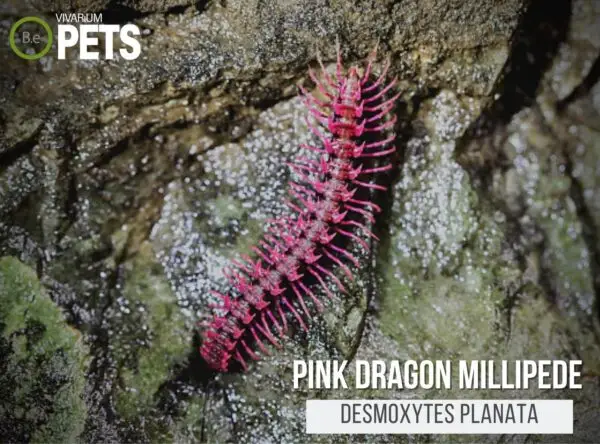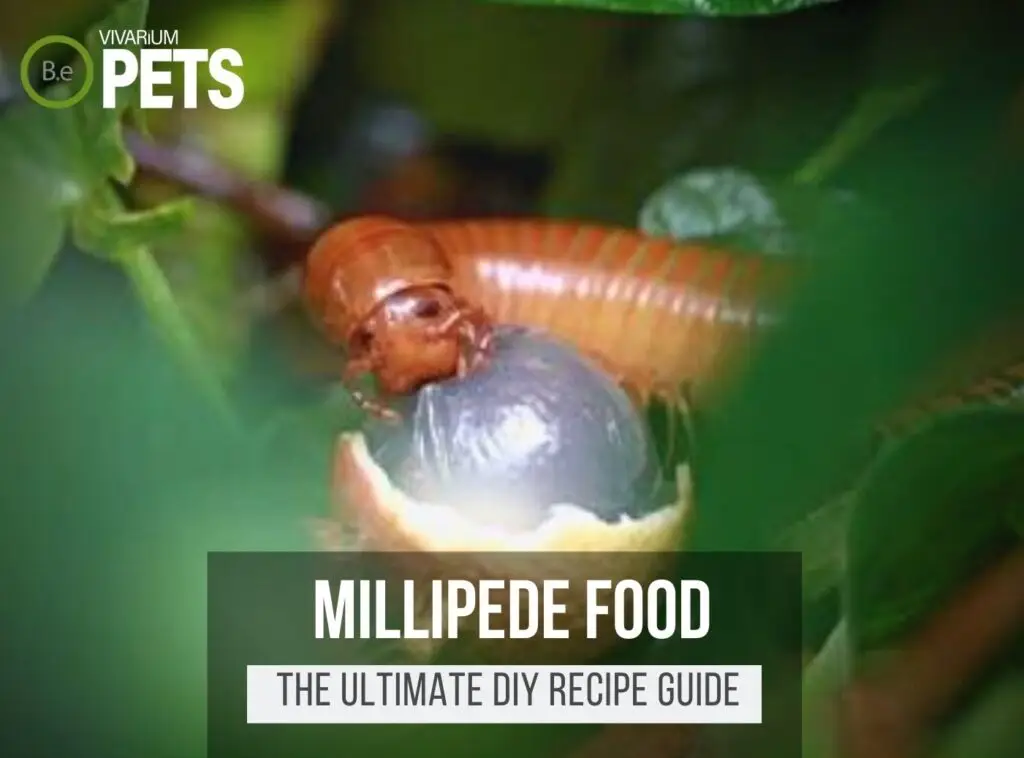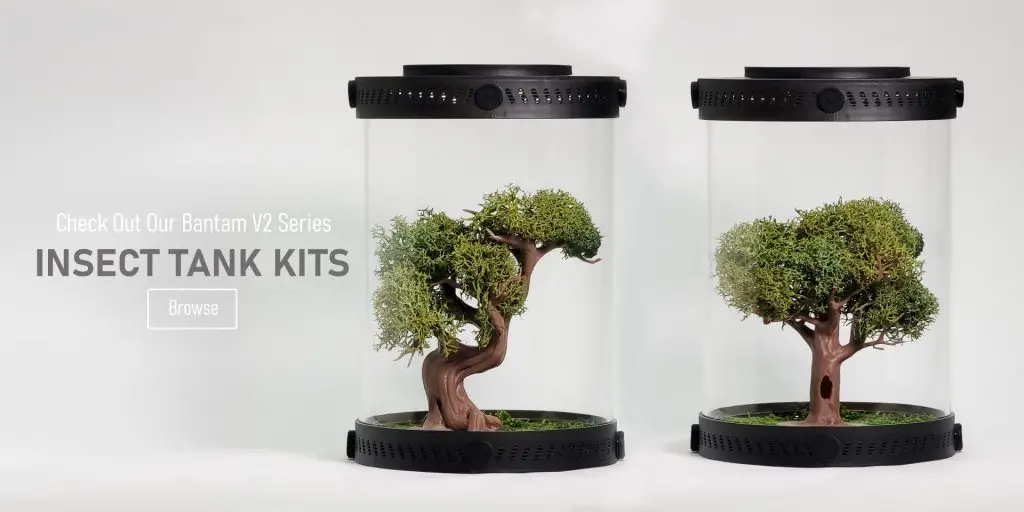The stunning Pink Dragon Millipede, or Desmoxytes planata, is an unusual pet to consider for a terrarium.
Not only are they incredibly captivating to look at, but they are also incredibly easy to care for.
This guide will give you all the information you need to know about providing the best possible habitat, and ideal feeding, and hydration practices.
We will also cover the basics for creating a stress-free environment, social behaviors, and common health issues to watch out for.
You’re in the right place if you’re looking to keep these spiny, tiny millipedes happy, healthy, and thriving!
Table Of Contents:
ToggleWhat Are Pink Dragon Millipedes?
Pink Dragon Millipedes, also known as Desmoxytes planata, are members of the Paradoxosomatidae family of millipedes.
These creatures are popularly called “pink dragons” due to their draconic shape, bright pink color, and spiny body.
Pink Dragon Millipedes are native to Southeast Asia, particularly India and Sri Lanka, and prefer to live in damp and humid habitats.
Desmoxytes planata is an omnivore, meaning they eat both plants and animal matter, and their diet consists of small insects, vegetables, leaf litter, and the occasional fruit.
Despite their menacing appearance, these friendly critters make excellent pets.
Create an ideal habitat for your millipede with our Customizable Millipede Enclosure Kits, which include everything you need to get started.
What Do Pink Dragon Millipedes Look Like?
Desmoxytes planata typically has a total of eight to 12 segments, each with two legs for a total of up to 24 legs. They are covered in small setae, giving them a furry appearance.
They are typically dark purple with a distinct pink stripe running down their length.
The size of this species can range from 3 cm in length.
As their name suggests, their body looks like small dragons, and these millipedes are sure to be the focal point of any terrarium.
In addition to their legs and segmentation, they also have two antennae and two pairs of sensory organs known as “palps”.
The palps are used to help them navigate as they explore their environment.
These millipedes also have teeth along the sides of their body which they use to harvest food particles, as well as additional appendages known as collophore which helps them to resist desiccation.
Benefits Of Using Pink Dragon Millipedes
The Desmoxytes planata is an ideal choice for many types of vivariums.
Not only do they add an interesting, vibrant splash of color, but they are also great for cultivating a biodiverse ecosystem in the enclosure.
Pink Dragon Millipedes are an active species and will scavenge around the substrate and leaf litter, aiding in the breakdown of organic matter and helping to cycle nutrients.
This, in turn, helps to create a more natural environment, fostering the growth of beneficial mold, fungi, bacteria, and microarthropods.
By choosing Pink Dragon Millipedes as part of your vivarium inhabitants, you will be providing your enclosure with valuable, helpful ecosystem services.


Pink Dragon Millipede Facts
Pink Dragon Millipedes are typically herbivorous, and their diet consists of mostly fruits, vegetables, and mushrooms.
Known for their calm and docile temperament, they have an average lifespan of 2+ years and a breeding season of summer and early autumn.
Habitat
The Pink Dragon Millipede is a species of millipede that is endemic to Southeast Asia.
Specifically, they are known to be located in Vietnam, Thailand, and Laos.
They are most notably located in isolated limestone cave systems where they typically reside in dark humid habitats.
Their natural habitat includes a wet substrate, usually consisting of soil, decaying wood, and leaves.
Since limestone cave systems are cooler than their surrounding areas typically, the Desmoxytes planata enjoys temperatures of about 75 to 80 degrees Fahrenheit.
In addition, their natural environment consists of high humidity, usually about 90%.
Replicate their natural habitat perfectly with our Bioactive Millipede Substrate Blend, designed to provide the ideal moisture and organic content for your millipedes.
Diet
In their natural habitat, Pink Dragon Millipedes primarily feed on decaying leaves, wood, and other sources of decaying organic matter.
It is a good idea to provide a generous layer of organic leaf litter when setting up a habitat.
Many find that fruits and vegetables make a great supplement to their natural diet.
When providing fruits and vegetables, it’s a good idea to lightly steam or blanch them. This breaks down the cell walls of the food and makes them easier to digest.
Temperament
Desmoxytes planata has quite a passive temperament when it comes to humans and other animals.
They generally do not interact with humans or other animals, as they do not instinctively seek out contact or require it to survive.
These millipedes are generally quite shy and lack the desire to socialize or explore.
Furthermore, they do not display any aggressive or defensive behaviors when humans or other animals are nearby.
With that being said, it should be noted that when disturbed, they may quickly curl up into a tight ball to protect themselves against potential predators or other threats.
Lifespan
Desmoxytes planata can live up to 2+ years if properly cared for.
During their lifetime, they will go through several developmental stages to reach their full adult size.
When they hatch from their eggs they are the size of a grain of rice and have beautiful yellow-green coloring.
As they grow, they molt and become larger and darker over time; this process also helps to regenerate and heal any injuries sustained during their growth period.
From the time they hatch, until they reach adulthood, they will undergo around five molts, with a few months in between each one.
When they become adults, they reach up to 3 centimeters in length and develop their iconic pink markings.
Overall, Pink Dragon Millipedes are a long-living species if properly cared for with the right environment and food sources.
Breeding
The Pink Dragon Millipedes mate seasonally in the late spring and early summer months.
The males lift the female’s body off the substrate and twine their bodies together during mating rituals.
Males will also introduce a special set of love organs called sclerites, which are located on the underside of their bodies.
The introduction of the sclerites releases a pheromone that attracts female mates, who will burrow into the substrate and lay their eggs.
The eggs are then fertilized and lay dormant until they are ready to hatch two to three months later.
When they are ready to hatch, the millipedes are born fully functional and can start reproducing the year after they enter adulthood.
It is important to remember that Pink Dragon Millipedes cannot survive in extreme temperature ranges, so their mating season should coincide with warm temperate springs.
Where To Find Pink Dragon Millipedes
Pink Dragon Millipedes are often found in tropical forests or caves, mainly in the countries of India, China, and Thailand.
These millipedes prefer to live in areas of high humidity and a temperature of at least 75°F or 24°C, so they can be a bit tricky to find in their natural habitats.
For those looking to purchase these stunning millipedes, reliable breeders can often be found online.
It is essential to ensure that you purchase the millipedes from a reliable source, as they often come with potential health risks, such as infestations or parasites.
Pink Dragon Millipede Care
The Pink Dragon Millipede is best kept at room temperature in an environment with relatively high humidity and a suitable terrarium substrate.
For feeding, they enjoy consuming small pieces of fruits and vegetables. Hydrate them with fresh water or fruit juices.
Creating a stress-free environment by using gentle handling techniques, avoiding sudden bright lights, and providing space for them to interact with their species is also key.
Tank Requirements
The ideal tank for Pink Dragon Millipedes should be a terrarium or paludarium. These will allow for plenty of space and provide suitable hiding spots for when the millipedes feel the need.
The ideal pH balance for the terrarium should be around 6.5-7.5, with a medium hardness and temperature of 25-28°C (77-82°F).
For substrate and decoration, leaf litter and either peat moss or coco-fiber should be used. terrarium moss, driftwood, and live tropical plants can be used to give the tank a natural feel.
When setting up the terrarium lighting, make sure it is set up during the day and off during the night, as this species isn’t used to abrupt lights and sudden disturbances.
What Do Pink Dragon Millipedes Eat?
Pink Dragon Millipedes are not picky eaters and require a mostly plant-based diet to stay healthy.
First and foremost, you must make sure that the food given to them is pesticide-free and non-toxic. Common food items that you can give them include:
- Fruits such as melon, banana, apples, blueberries, and grapes
- Vegetables such as carrots, squash, kale, and spinach
- Leafy green plants such as clover and grass
- Dry flowers, mushrooms, bark, and log pieces
- Commercial millipede food
When feeding, you should always make sure that the food is offered in small, bite-sized pieces. Additionally, depending on the type of food, it may be necessary to pre-soak it before feeding.
If you’re more of an avid hobbyist like myself, check out my ultimate DIY Millipede food guide. I explain the best foods and my favorite recipe in more depth.
Best Tankmates For Pink Dragon Millipedes
The Pink Dragon Millipede prefers its own company, but other beneficial tankmates can be kept with them. Two examples are isopods and springtails.
Isopods, like the popular millipede-sized Porcellio species, are scavengers who feed on organic matter, thereby cleaning up after the millipedes.
They are also a great source of food for the millipedes when they shed or die. Springtails are small, nearly microscopic, and occupy the top soil layers.
They maintain the balance of the tank habitat and act as a vital part of the food chain.
Both of these species can exist in a tank with Pink Dragon Millipedes and the additional presence of these beneficial animals can help support their health.
Conclusion
We hope that this guide has provided you with all the information you need to know about caring for the beautiful Desmoxytes planata.
With the right knowledge and environment, you’ll be sure to have happy and healthy Pink Dragon Millipedes that can live up to their full potential.
So what are you waiting for? Sit back, relax, and enjoy your new pet millipede!
Create the ideal habitat for your millipedes with our species-specific soil mixes and Insect Enclosure Kits. These products provide everything you need for a successful and thriving millipede colony.
Frequently Asked Questions
Desmoxytes planata is a species of millipede that secretes a toxic substance from its exoskeleton as a defense mechanism. While the toxicity of the substance is not well-studied, it is believed to be relatively mild and not harmful to humans, but caution should still be taken when handling the millipede.
Dead leaves and decaying vegetation are the primary food source for Desmoxytes planata millipedes.
The primary defense mechanism of Desmoxytes planata is to secrete a toxic substance from their exoskeleton. This substance is believed to be relatively mild and not harmful to humans, but it can cause skin irritation and other symptoms in some people. In addition to the toxic secretion, Desmoxytes planata can also curl up into a tight ball to protect its vulnerable underside when threatened.
Yes, Desmoxytes planata millipedes can produce a defense chemical that contains hydrogen cyanide.





